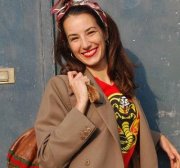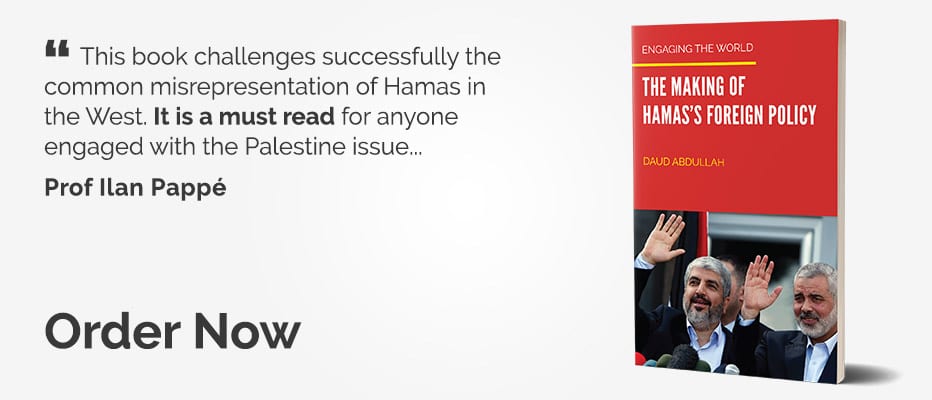With its two leading art fairs, Paris + Art Basel and ASIA NOW, as well as exhibitions scattered around the city, Paris Art Week 2022 had an extensive presence of Middle Eastern artists and galleries, and paid strong attention to the current situation in Iran. The week is one of the most important diary dates for art lovers, who flock to the French capital to take the pulse of art world trends. This year, in particular, was marked by a series of art fairs; the main fair was undoubtedly Paris + Art Basel, which was accompanied by several smaller but significant fairs, such as ASIA NOW and the AKKA Art fair, dedicated to Africa.
AKKA featured a few North African galleries from the Middle East-North Africa region and was noticeable in the direction of countries like Morocco looking for connections to the African subcontinent, rather than linking themselves to the Middle East only. One of AKKA's special projects, for example, was a monumental installation by Abdoulaye Konaté, a Malian artist and an emblematic figure of African contemporary visual arts, who was represented by the Casablanca gallery La Galerie 38.
In this regard, we can say that it's at art fairs that the new geographies of the art world are reconfiguring. The market trail and silk roads of today are leading artistic discourses. This is not necessarily a bad thing for the art environment generally.
"We think of the market as something bad, something which is somehow demining the work of the artist," explained curator Thien-Bao Le, who curated a show at A2Z gallery during Paris Art Week. "But actually it's not that. A flourishing market is what allows art scenes to emerge."
Alongside countries that are have developing economies, allowing them to finally participate in international fairs, there are also other countries that are investing in art as a luxury item, like Saudi Arabia. Spaces such as Athr — a constant presence at international art fairs — have showcased works at Paris +, while Hafez gallery had its booth at ASIA NOW.
READ: Establishing a Palestinian presence at the 2022 Venice Biennale
In all these fairs during the week, there have been a number of talks about the omnipresent NFTs in art, generally in a positive light. At AKKA, Kenza Zouari, co-founder of MONO gallery in Tunis, asked the question, "Are NFTs a windfall to be quickly seized or a sweet dream that the continent's artists should be careful of?" More talks at ASIA NOW explored timely subjects such as "creation in times of crisis through the examples of Lebanon, Iran, and China."
Paris + Art Basel
The biggest fair of the Paris Art Week was Paris + Art Basel at the Grand Palais Éphémère, in the historic heart of Paris on the Champ-de-Mars. "With its incomparable history and contemporary dynamism, Paris is uniquely positioned as a pivotal epicentre of the international cultural scene," said Marc Spiegler, Art Basel's global director. "We aim to build on Paris's unparalleled standing as a global metropolis to help create a vibrant week that even further amplifies the city's international resonance as a cultural capital."
In terms of the Middle Eastern art at the fair, perhaps the most interesting booth belonged to the Marfà gallery from Beirut in the emerging section, where each gallery could present one artist only. Marfà decided to set up a show by Lebanese artist Caline Aoun, who installed a fountain at the centre of the booth, giving out Klein-blu ink. The centrepiece was connected to a series of beautiful pieces of cloth and paper drenched in blue ink for hours and hours. "The idea was an attempt to grasp time. The artist asks: how do you grasp something intangible?" explained the gallerist, who notes that she's really pleased with this first opportunity at Paris + Art Basel. "It's a wonderful first edition, with high quality works, and the people coming in are incredible."
In different parts of the fair guerrilla writing, posters and impromptu art pieces were referencing Iranian women and showing solidarity with their struggle. These included works by artist Hanieh Delacroix, who pasted posters in different corners of the art fairs and galleries with "#MahsaAmini" printed on them. The guerrilla work was called "Femme, Vie, Libertè, Egalitè, Fraternitè".
Iran and UAE at ASIA NOW
The other central event for Middle Eastern art at the Paris art week was the 8th Edition of ASIA NOW, which presented artists and galleries from the Middle East to South-East Asia. This year's theme was Feux de Joie (Flames of Joy). At the core was the creation of a sense of community through a collective artistic experience.
"We were here last year and we can see how the art fair has grown," said the assistant from Etemad Gallery from Tehran. "It's really nice to see many Iranian artists as well as many Asian artists. We brought seven Iranian artists to provide a wide picture of the art in the country. They all worked with different media, and are of all ages, and go from figurative all the way to abstract."
She noted that one of her most appreciated artworks among those presented was "Untitled" by Iranian artist Hiva Alizadeh, an installation realised in 2022 and composed entirely of synthetic hair. In light of what's currently unfolding in Iran, this has been looked at by the fair's visitors as a strong statement.
Presenting a variety of different artists was also the strategy of O Gallery in Tehran. "It's the first time we have showed in ASIA NOW, and we got good feedback from visitors," the gallerist told me. It showcased six artists, three women and three men. "For this fair, we mainly exhibited artists working in abstract and figurative art. Most of them are in the emerging range, going from their early 20s to their late '30s in terms of age. It's very important for us to discover new artists and introduce them into the primary market, but to help the programme here we also presented some more established artists."
At ASIA NOW the CMS collection, which aims to launch young artists, presented a Syrian artist, Anas Albraehe, who lives in Lebanon. He portrays with extreme sensibility and humanity the different topics that he approaches, both through painting and poetry. "It's something very oriental to express through these two art forms," explained one of the three collectors. "His paintings are a metaphor for a psychological state of mind. In his subjects, he seeks to capture human vulnerability and dignity." Albraehe's paintings are warm, bright, and intimate.
READ: Will the new Ad-Diriyah Contemporary Art Biennale tackle the fundamental issues of this time?
Another piece, by Mitra Farahani and presented by +2 Gallery, was called "Behjat Sadr: Time Suspended", and consisted of a film from 2006 dedicated to Behjat Sadr, one of the pioneers and masters of modern art in Iran. In the film, Sadr herself guides us through her intense, compelling canvases, musing on her process, her influences, and her complicated relationship with fame and mortality. Her highly abstract mind wanders into dark, mysterious beautiful spaces, and the camera follows her, providing visual access to her imagination.
The Fabien Leclerc gallery deserves a mention. It showed the site-specific project In Situ, consisting of the work of three Iranian artists based in Dubai. Ramin Haerizadeh (born 1975, Tehran), Rokni Haerizadeh (born 1978, Tehran) and Hesam Rahmanian (born 1980, Knoxville) have lived and worked together since 1999 in Tehran, and at the fair they presented a series of exquisitely decorated plates, arranged as an installation. They also had a video showing the news of protests in Baghdad, but with the manifests represented as animals, and a carpet-like canvas, all working together as one very surreal and colourful piece in a narrow corridor, where militancy marries imagination.
Gulf Futurism
ASIA NOW also featured Jeddah-based Hafez Gallery, which presented a number of printing works by Afsoon and delicate collages by Maryam Beydoun. The showcase Gulf Futurism had several works of video art by women artists from Palestine, Saudi Arabia and Iraq.
Coined by artist Sophia Al-Maria, the term "Gulf Futurism" has come to describe an artistic and literary movement in the region, based on the process of rapid and reckless development of Gulf cities. In the videos, the artists denounce the devastation of the environment caused by the extraction of fossil fuels and frenetic urbanisation. They also point out the contradictions between extreme wealth and the precariousness of migrant workers, with limited rights, who live and work in difficult conditions. Others expressed reservations about today's media-saturated world, criticising the isolation of individuals generated by technology.
Present in all the artworks was a constant digital connection that blurred the separation between public and private space and deplored lives made up of virtual illusion zones. They evoked the upheaval of certain traditions, and the erasure of history in collective memory and landscapes.
"We have the feeling that we are losing our bearings in the face of the extreme rapidity of these developments," the show's curator, Odile Burluraux, pointed out. "Numerous issues are at stake: climate change, post-humanist values, the redefinition of a societal model."
While the exhibit was very promising on its premises, it was given too little space within the fair. Sadly, only a small screen was dedicated in the middle of the fair for this extremely interesting series of works. Who has time to sit for hours in the middle of a busy art week? What would have been more conducive to the concept, and more satisfying, would have been a room with multiple screens to contrast and compare the different practices and approaches of these very eloquent artists.
Finally, from this Paris Art Week we can see the production of art coming back very strongly after the pandemic haitus. While we might argue that increasing the number of art fairs may not be good for the environment, we can appreciate the food for thought and strong statements made. In these conversations, Middle Eastern artists are still among the most eloquent voices, even when they steer away from exclusively political themes, and are able to prove themselves in more formal and aesthetic territory.

![Le Monnaye de Paris, ASIA NOW’s location [Naima Morelli]](jpg/1e6e4d869ad62566-photo-e16672200533017cf0.jpg)

![f5463c6620c82ec5-photo Artworks by Tunis’ artists at Paris + Art Basel [Naima Morelli]](jpg/f5463c6620c82ec5-photo88d5.jpg)
![bc4e9eec5fe8eba3-photo Ramin Haerizadeh, Rokni Haerizadeh, and Hesam Rahmanian at Fabien Leclerc booth at ASIA NOW [Naima Morelli]](jpg/bc4e9eec5fe8eba3-photoad5d.jpg)
![b468e39b6e42c2c4-photo Marfà Gallery from Beiruit booth at Paris + Art Basel, show by Lebanese artist Caline Aoun [Naima Morelli]](jpg/b468e39b6e42c2c4-photoc369.jpg)
![b4f22cf17fc1a750-photo The courtyard of La Monnaye at ASIA NOW [Naima Morelli]](jpg/b4f22cf17fc1a750-photo8710.jpg)
![AsiaNowGuerrillaartowork “Femme, Vie, Libertè, Egalitè, Fraternitè,” a Guerrilla artwork at ASIA NOW [Naima Morelli]](jpg/asianowguerrillaartoworkc369.jpg)
![AsiaNow-GulfFurism-photo Video screen for Gulf Futurism at ASIA NOW [Naima Morelli]](jpg/asianow-gulffurism-photo1cde.jpg)
![AsiaNow-GuerrillaArtwork “Femme, Vie, Libertè, Egalitè, Fraternitè,” a Guerrilla artwork at ASIA NOW [Naima Morelli]](jpg/asianow-guerrillaartwork8928.jpg)
![a2dee44f4488b59e-photo Paris + Art Basel at Grand Palais Éphémère [Naima Morelli]](jpg/a2dee44f4488b59e-photo6639.jpg)
![8683f7c98868e33a-photo Hafez Gallery’s booth [Naima Morelli]](jpg/8683f7c98868e33a-photo6639.jpg)
![732fa4bcd90d037d-photo The VIP preview of ASIA NOW [Naima Morelli]](jpg/732fa4bcd90d037d-photob609.jpg)
![610f7ba4fd4f8c61-photo Ramin Haerizadeh, Rokni Haerizadeh, and Hesam Rahmanian at Fabien Leclerc booth at ASIA NOW [Naima Morelli]](jpg/610f7ba4fd4f8c61-photoad5d.jpg)
![52def858ef6d65e5-photo The VIP preview of ASIA NOW [Naima Morelli]](jpg/52def858ef6d65e5-photo88d5.jpg)
![9f6e471d3f20d055-photo Hafez Gallery’s booth [Naima Morelli]](jpg/9f6e471d3f20d055-photo88d5.jpg)
![5-AsiaNow-openingnight The VIP preview of ASIA NOW [Naima Morelli]](jpg/5-asianow-openingnightad5d.jpg)
![3-AsiaNow-TheranGallery-photo Hiva Alizadeh at Hiva Alizadeh booth at ASIA NOW [Naima Morelli]](jpg/3-asianow-therangallery-photo9596.jpg)
![1e6e4d869ad62566-photo Le Monnaye de Paris, ASIA NOW’s location [Naima Morelli]](jpg/1e6e4d869ad62566-photo-e1667220053301e6e3.jpg)
![1-Paris+ArtBasel BeirutGallery Marfà Gallery from Beiruit booth at Paris + Art Basel, show by Lebanese artist Caline Aoun [Naima Morelli]](jpg/1-parisartbasel-beirutgallery9596.jpg)

